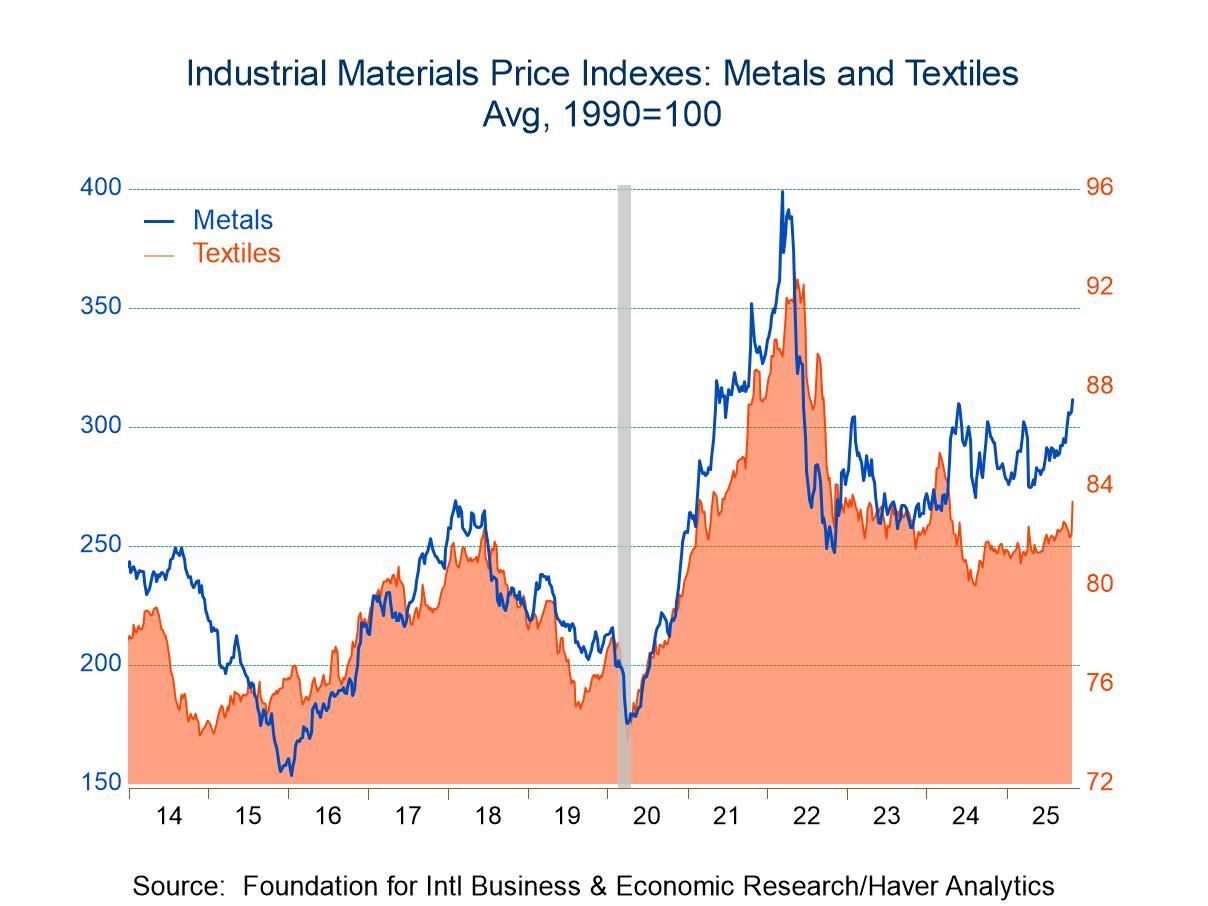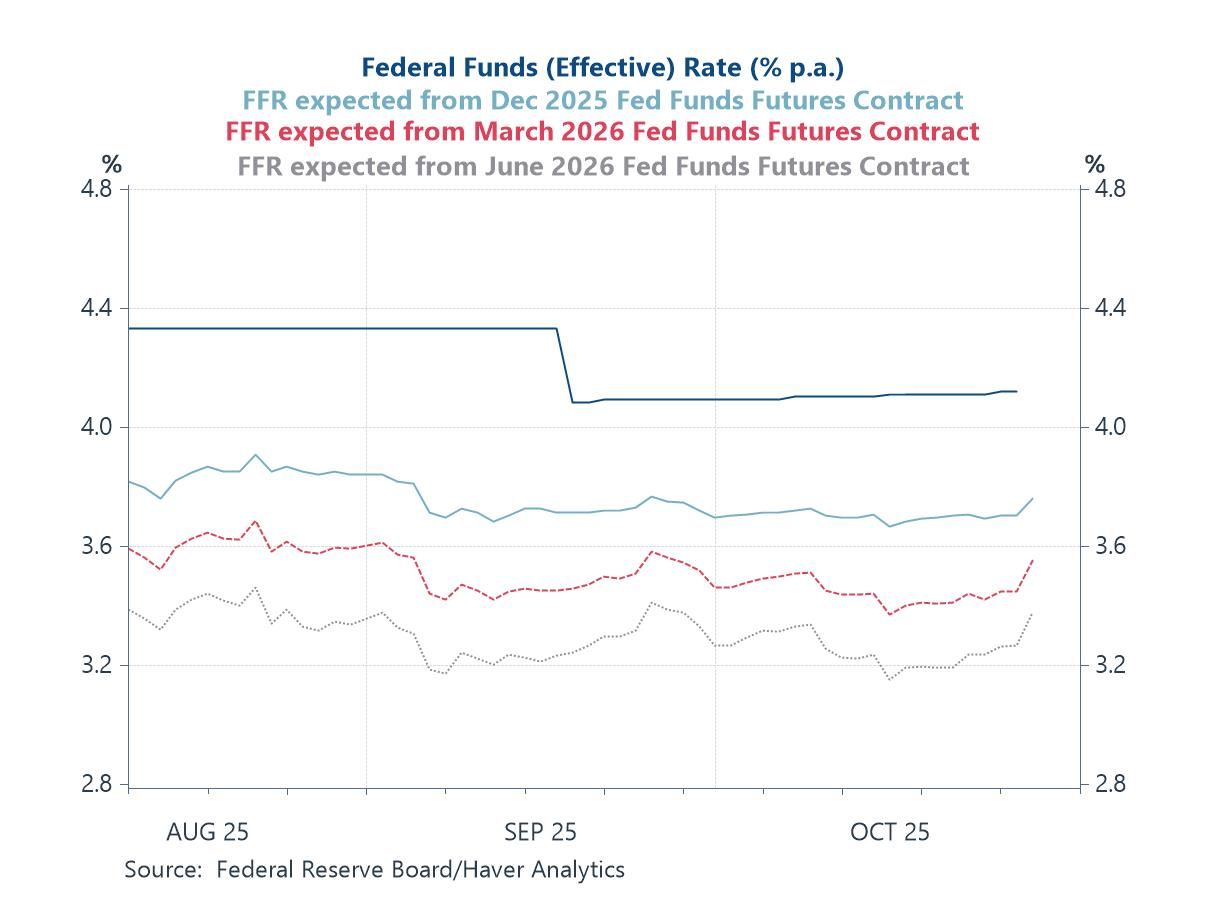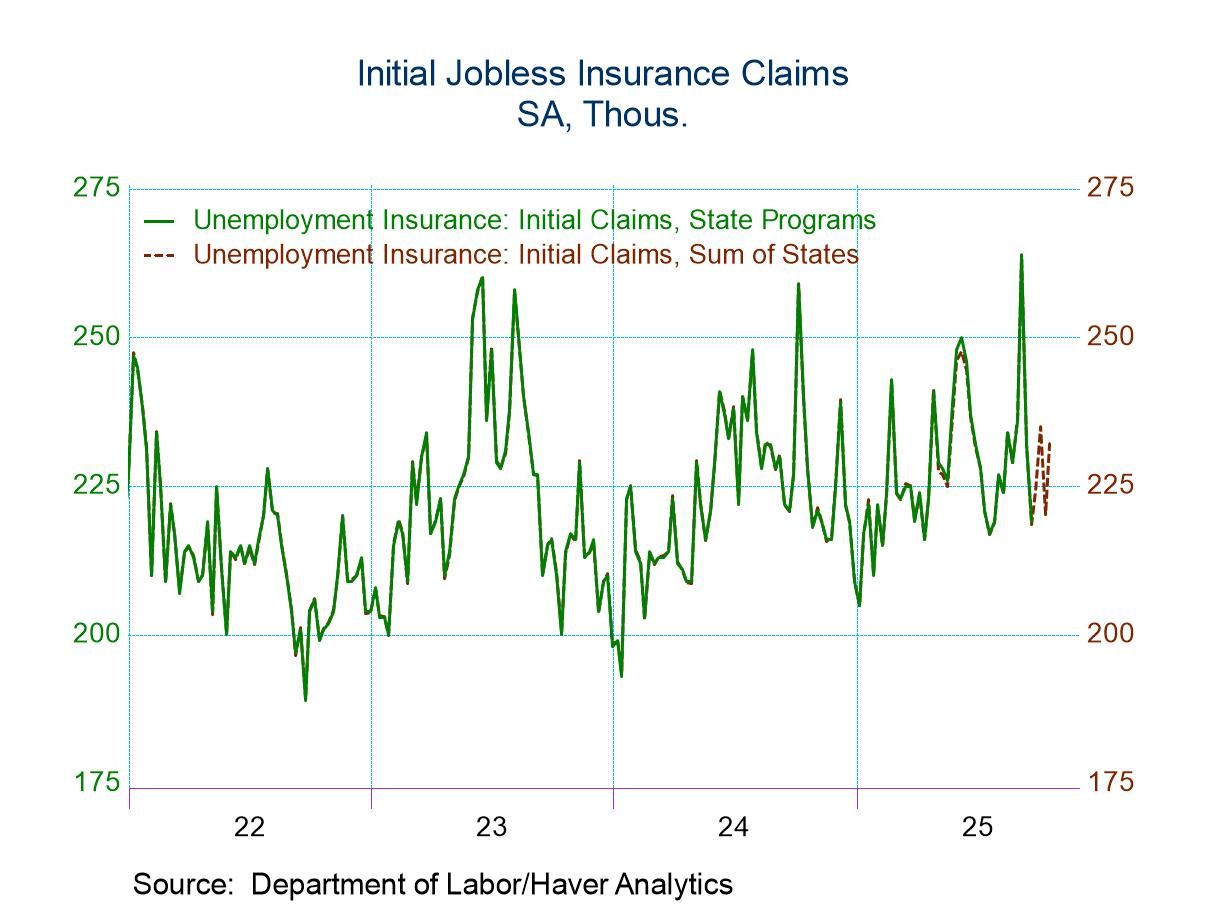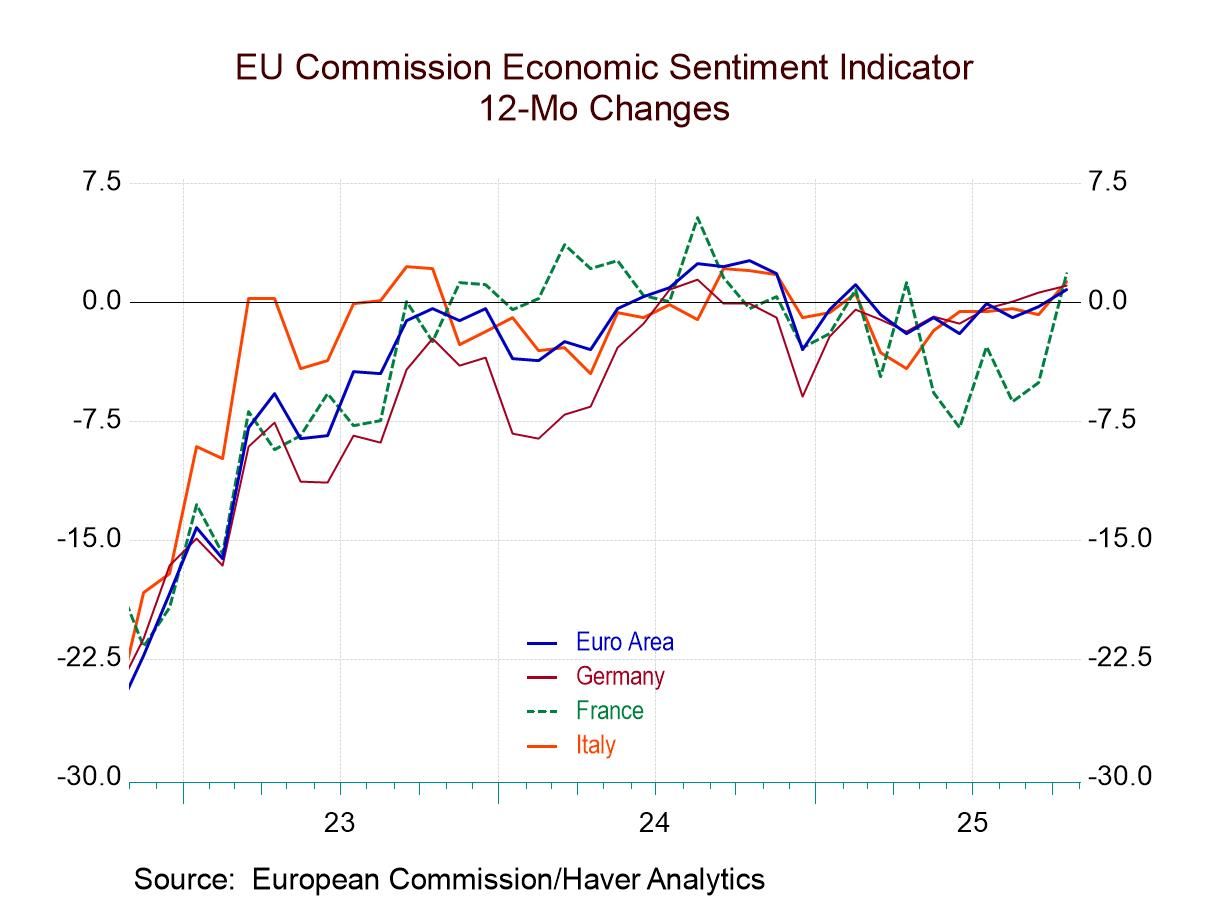 Global| Feb 26 2003
Global| Feb 26 2003Mortgage Applications to Refinance Surged Again
by:Tom Moeller
|in:Economy in Brief
Summary
As the effective interest rate on a 30-Year mortgage dropped below 6%, applications to refinance existing mortgages surged. The index of mortgage applications compiled by the Mortgage Bankers Association rose 5.5% last week, but the [...]

As the effective interest rate on a 30-Year mortgage dropped below 6%, applications to refinance existing mortgages surged. The index of mortgage applications compiled by the Mortgage Bankers Association rose 5.5% last week, but the index of applications to refinance surged 10.1% to the highest level since mid-November.
Mortgage applications for home purchase fell 7.5%, the second sharp decline in the last three weeks. Purchase applications have been trending lower since last Summer and are down 24% from the July peak.
Interest rates on a conventional 30-Year mortgage fell with the contract rate down to 5.65%. The effective rate (incl. points) fell to 5.95%. The effective rate on a 15-year mortgage dropped to 5.37% versus 5.55% averaged in December.
| MBA Mortgage Applications (3/16/90=100) | 2/21/03 | 2/14/03 | 2002 | 2001 | 2000 |
|---|---|---|---|---|---|
| Total Market Index | 1,142.3 | 1,082.8 | 799.7 | 625.6 | 322.7 |
| Purchase | 309.0 | 334.1 | 354.7 | 304.9 | 302.7 |
| Refinancing | 5,989.6 | 5,438.1 | 3,388.0 | 2,491.0 | 438.8 |
by Tom Moeller February 26, 2003

Since the end of last year the index of commodity prices compiled by the Journal of Commerce (JoC) and the Economic Cycle Research Institute (ECRI) has risen almost 10%.
While the index is heavily weighted toward energy prices, gains in other commodity prices have been significant. Textile prices have risen 6.5% since last Fall led by surging cotton prices, up by more than one third.
Metals prices are up 8% since the Fall lows. Aluminum prices have risen roughly 8% since October and copper scrap prices have risen nearly 15%. Steel scrap prices (a key indicator of industrial sector activity) are up roughly 10% but the gain has been very recent.
Higher prices for petroleum products have of course led the gains in commodity price indexes with the JoC-ECRI index of petroleum prices up by nearly one-half since November.
During the last ten years there has been a 64% correlation between the level of the JoC-ECRI Index and the y/y change in factory sector industrial production.
| JOC-ECRI Industrial Price Index (1996=100) | 2/21/03 | 2/14/03 | 2002 | 2001 | 2000 |
|---|---|---|---|---|---|
| All Items | 88.7 | 88.5 | 79.5 | 80.3 | 89.0 |
| Textiles | 63.9 | 63.4 | 59.7 | 61.4 | 69.7 |
| Metals | 81.2 | 81.1 | 75.1 | 75.4 | 87.7 |
| Miscellaneous | 90.8 | 90.4 | 85.8 | 87.3 | 86.5 |
| Petroleum Products | 160.1 | 161.3 | 110.1 | 108.9 | 137.6 |
Tom Moeller
AuthorMore in Author Profile »Prior to joining Haver Analytics in 2000, Mr. Moeller worked as the Economist at Chancellor Capital Management from 1985 to 1999. There, he developed comprehensive economic forecasts and interpreted economic data for equity and fixed income portfolio managers. Also at Chancellor, Mr. Moeller worked as an equity analyst and was responsible for researching and rating companies in the economically sensitive automobile and housing industries for investment in Chancellor’s equity portfolio. Prior to joining Chancellor, Mr. Moeller was an Economist at Citibank from 1979 to 1984. He also analyzed pricing behavior in the metals industry for the Council on Wage and Price Stability in Washington, D.C. In 1999, Mr. Moeller received the award for most accurate forecast from the Forecasters' Club of New York. From 1990 to 1992 he was President of the New York Association for Business Economists. Mr. Moeller earned an M.B.A. in Finance from Fordham University, where he graduated in 1987. He holds a Bachelor of Arts in Economics from George Washington University.






